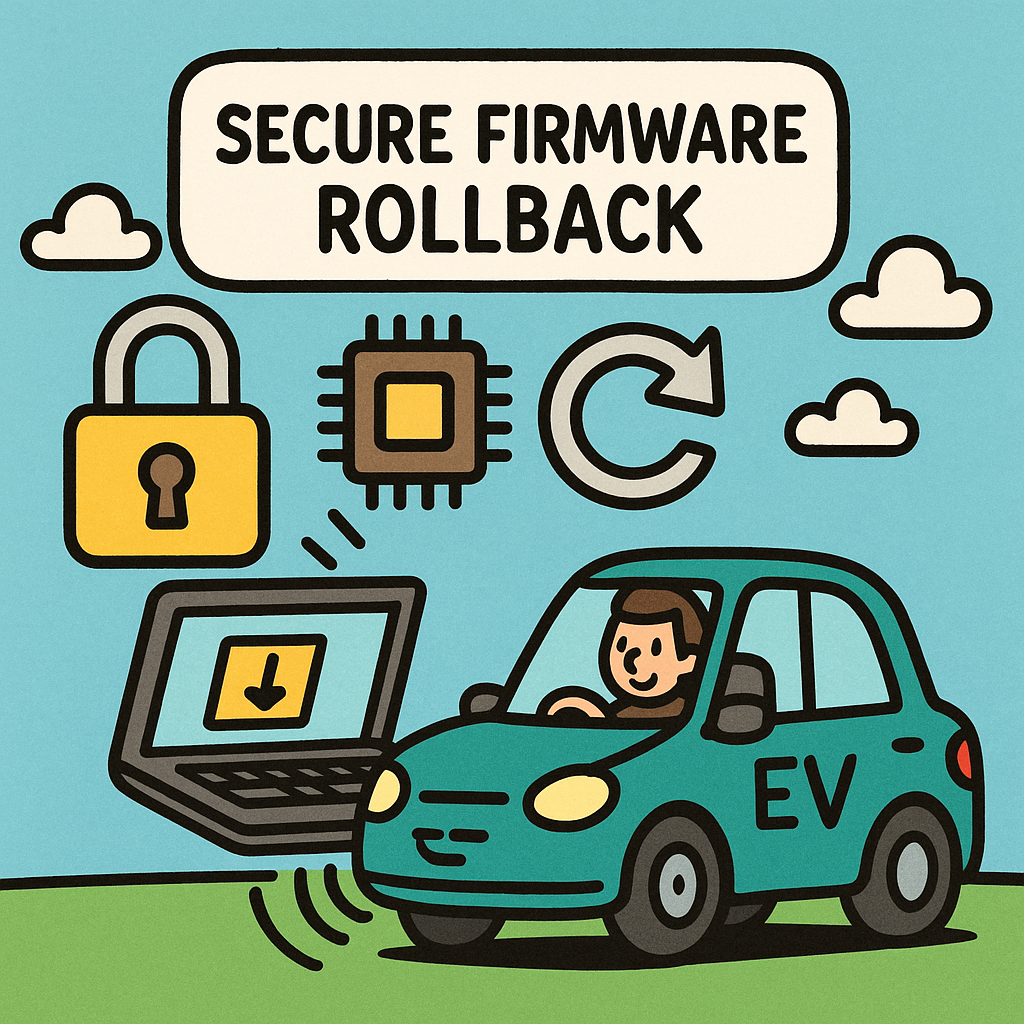Understanding the Need for Secure Firmware Rollbacks
In the realm of electric vehicles (EVs), Advanced Driver-Assistance Systems (ADAS) play a crucial role in enhancing safety and driving experience. However, as these systems grow more complex, they also become prime targets for cyber threats. The increasing reliance on Over-the-Air (OTA) updates to improve functionality and security introduces an inherent risk: what happens if a firmware update introduces vulnerabilities or malfunctions? This is where secure firmware rollbacks become essential.
The Challenge of Firmware Updates in Safety-Critical Systems
Firmware updates in ADAS ECUs must be executed flawlessly. A malfunctioning update can lead to unexpected behavior, potentially endangering lives. Therefore, the rollback mechanism must be robust enough to revert to a previous, stable firmware version if the new one fails. This is not just about having a rollback option; it’s about ensuring that it is secure and reliable.
Design Considerations for Secure Rollback Mechanisms
When designing a secure rollback feature, several key factors must be considered:
- Integrity Verification: Each firmware version must be cryptographically signed to ensure its authenticity. This prevents attackers from replacing legitimate firmware with malicious code.
- Redundancy: Maintaining multiple firmware versions in non-volatile memory can be costly in terms of storage, but it is necessary for ensuring availability if a rollback is needed.
- Rollback Triggers: The system should intelligently determine when a rollback is necessary. This could be based on telemetry data indicating performance issues or error logs generated during operation.
Hardware and Firmware Architecture
Implementing secure firmware rollbacks requires a careful balance of hardware and firmware capabilities. A modern ADAS ECU typically includes:
- Microcontroller with Secure Boot: This ensures that only firmware that has been verified against a trusted signature can be executed.
- Flash Memory Management: The ECU should be equipped with flash memory that supports multiple partitions, allowing for the storage of the original and updated firmware.
- Watchdog Timers: These can be implemented to monitor the operation of the firmware. If the system detects anomalies, it can trigger a rollback to the last known good state.
Firmware Rollback Algorithms: Ensuring Reliability
At the heart of the rollback mechanism lies the algorithm that governs the process. This algorithm must ensure that:
- The system can revert to a previous firmware version without corrupting data or state information.
- Rollback processes are initiated in a secure manner, preventing unauthorized access.
- All transitions between firmware versions are logged to maintain a clear history for audits and troubleshooting.
A common approach is to utilize a dual-partition model where one partition is active while the other is a standby. If an update fails, the system can quickly switch back to the standby partition. This approach minimizes downtime and enhances overall reliability.
Real-World Case Studies: Lessons Learned
Several automotive manufacturers have faced challenges when implementing OTA updates and rollback mechanisms. For instance, a prominent EV manufacturer experienced significant issues with an OTA update that resulted in unintended vehicle behavior. The lack of an effective rollback led to widespread customer dissatisfaction and highlighted the importance of a well-thought-out rollback strategy.
In contrast, another manufacturer prioritized the development of a secure rollback mechanism. Their system utilized a combination of secure boot, multiple firmware partitions, and intelligent monitoring to ensure that any issues could be addressed promptly. This proactive approach not only safeguarded the vehicles but also instilled confidence in their customer base.
Trade-offs in Design Decisions
Implementing secure OTA firmware rollbacks is not without its trade-offs. While ensuring security and reliability, developers must also consider:
- Cost: More secure systems may require additional hardware components or more complex software architectures, increasing overall vehicle costs.
- Complexity: The more safeguards implemented, the more complex the system becomes. This can lead to longer development cycles and increased potential for bugs during the integration phase.
- Performance: Some security measures may introduce latency in the update process, which could affect the user experience.
Ultimately, the goal is to find a balance that meets safety standards while minimizing risks associated with cybersecurity vulnerabilities.



